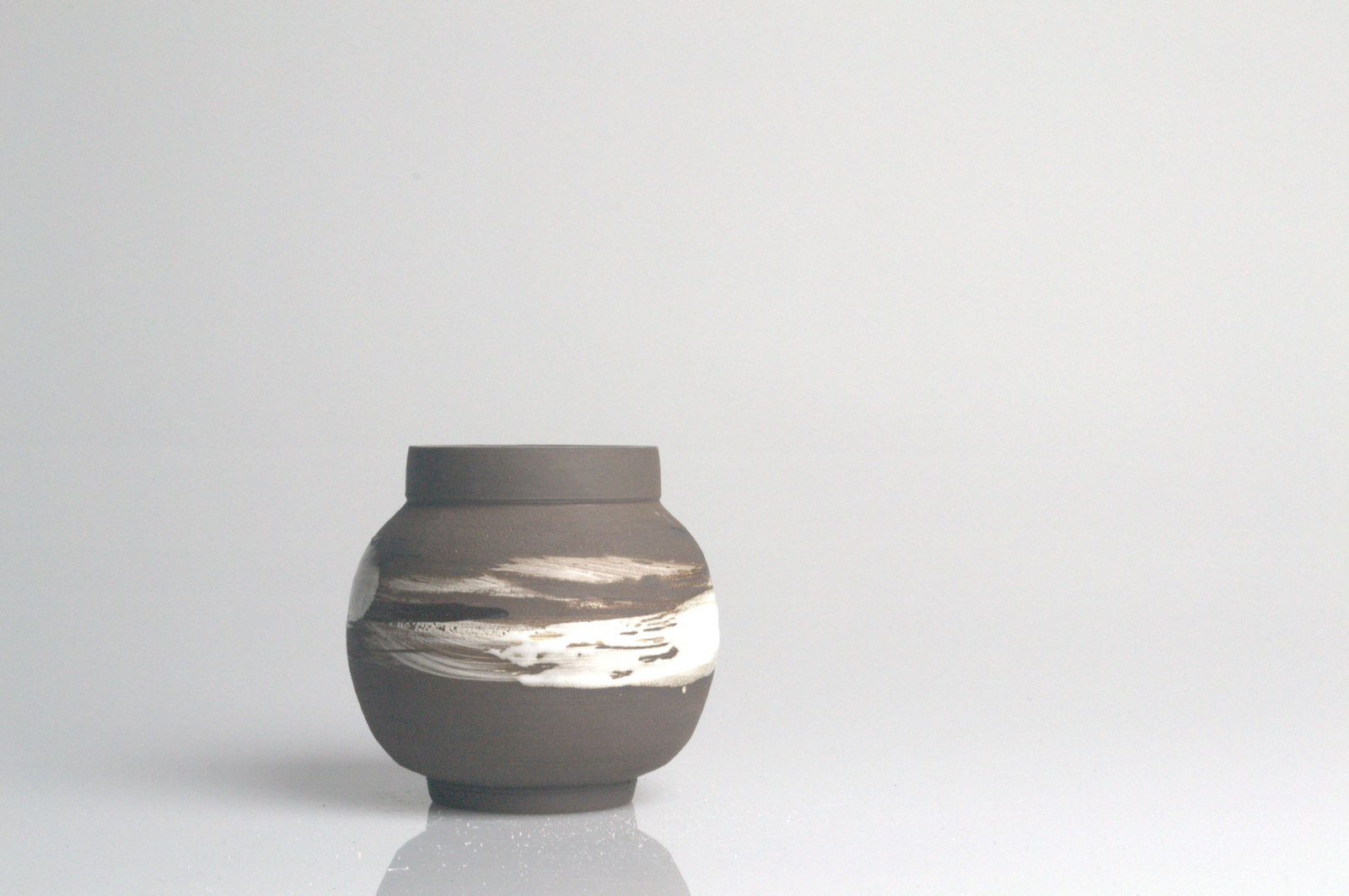Monday 2nd November
Aldo Tambellini Black Matters
Spent the day looking around the exhibitions at the Tate Modern to expand possible concepts/ ideas to explore and gain some inspiration form well known artists.
Thoughts
Influence of colours:
Black is actually the beginning of everything’ Aldo Tambellini
I’m particularly interested in the black Vulcan clay and so was drawn to the artist Aldo Tambellini. Painting black paint onto glass slides and presenting as a series of almost scientific/ astronomical images. Each slide beautiful and unique. Some looked let cells dividing under a microscope whilst others could have been photos of the surface of the moon. It brought into question the importance of black related to our very existence. The black hole for example or the beginning of life/ death. Described as ‘rippling, cosmetic images’ by the Tate Modern gallery. It got me thinking about the significance of using black clay to create my work- perhaps it is not simply because I am replicating the colours inspired by the landscape but it may actually have deeper connotations. Is it because of the morbid and melancholic associations of the colour. Black worn in funerals
Black raven sign of death/ sinister
Black ammunition
Storm
Hamad Abdalla
Defeat 1963
Black hole sucking you in
Black is night
Black is rotten
Does the colour black therefore hold more significance in my pottery than I first thought?
How can I represent some of these ideas in my work?
Monochrome White
After the oppressiveness of black I moved into the lightness of white. A room dedicated to the work of artists who use the monochrome white of a canvas (cloth/ plaster) to engage us in conversation about the use of just white, without image to consider ideas/ spark thoughts. Whilst in the room, there was definitely a sterile feeling. It felt a bit clinical and imposing. Without image the art resists ‘meaning and interpretation’ Tate Modern. Interestingly the Tate noted that ‘for some people, it has come to symbolise everything that is believed to be elitist and difficult about modern and contemporary art.’ (Tate Modern 2020)
‘While the paintings and reliefs in this room all use white, or a range of near-white hues, they demonstrate the many ways in which such an apparently reduced range of possibilities can be employed.’ https://www.tate.org.uk/visit/tate-modern/display/in-the-studio/painting-white
‘It draws attention to a variety of techniques, materials, textures, surfaces, structures and forms, and emphasises the responsiveness of white to light and shadow.’
https://www.tate.org.uk/visit/tate-modern/display/in-the-studio/painting-white
The use of white is something that I’ve been experimenting with in terms of glaze applications. I’d agree that the use of white has encouraged me to explore different ways/ consistency of the white glaze. I’ve been interested in it’s play on shadows and it illuminessence in different lighting. Perhaps this is something I might wish to explore further in presenting my work after completion.
The artists in this room also explore the philosophical, poetic, spiritual or religious associations of white, which in some cultures can suggest contemplation, emptiness, the void or infinite space. Considered in this way, rather than lacking meaning, white becomes loaded with significance.
https://www.tate.org.uk/visit/tate-modern/display/in-the-studio/painting-white
This links nicely with the connotational links to black. A more spiritual focus rather than ending/ death/ existence. Possibly a contrast between the scientific ideas generated from Aldo Tambellini’s work (cells dividing, astronomy, death etc) and those thoughts linked to whiteness being spiritual, enlightened and of course religious. Could this be reflected through my work, an application of the science of geography with the spiritual link to the sublime?
Something else that drew my attention was the Self- Burial (television Interference Project)1969
Self-Burial
The world will eventually swallow you up.
Linking to my earlier posts on the river Swale, the disjointed nature of this ‘self-burial’ resonates strongly with me and my thought’s of being swallowed by the mud as a child. The photograph almost resembles the out of body experience I recall having as the mud would swallow me up. Disjointed and momentary, like watching a cartoon. Interesting to see that the artist remained rigid in the same position with the same facial expression. Like the child unable to visualise the reaction to literally sinking in the mud-only able to focus on the action of how this event could unfold (if it were to)
This has started to get me thinking more about the sublime and memories of the fear of nature/ the landscape.
How can this be incorporated into my work?
Huma Bhabha
I was listening to the radio the other day and heard about the following artist, Huma Bhabha; a Pakistani-American sculptor.
Her artwork definitely has a nightmarish quality about it. The figures / sculptures are grotesque and haunting and encourage the viewer to face dark and taboo ideas.
Not sure how I could incorporate elements of her art into my work but I think the key themes and ideas linked to the realisation of our mortality could be incorporated. I think it’s the idea of turning to dust or the idea of something melting that I wonder might be interesting to explore.
Paul mentioned to me that the Vulcan Black clay will melt after a certain temperature which would be interesting to explore further.
I’ve started thinking about creating work that is more instillation focussed. Similar to the ‘Self Burial’ where a series of pots are made but each one different, showing the gradual change/ decay of the pot sinking into the ground.
I thought this would be interesting to present as the groins moving out into the estuary. I wasn’t sure however how this could be presented- whether the posts would become increasingly disjointed or whether the ground seems to be sucking the pots in- bit by bit.








